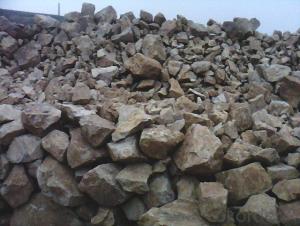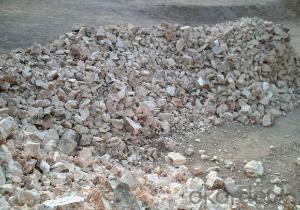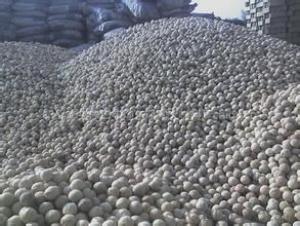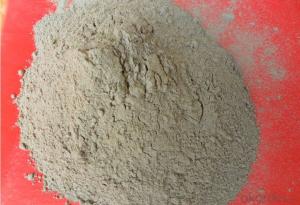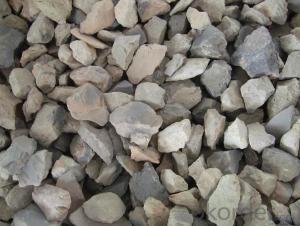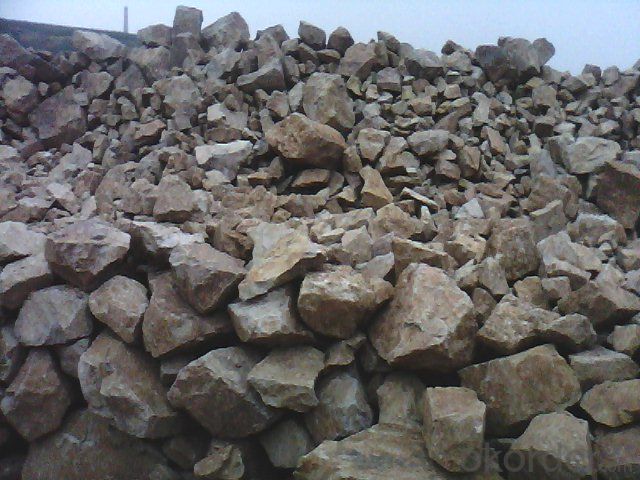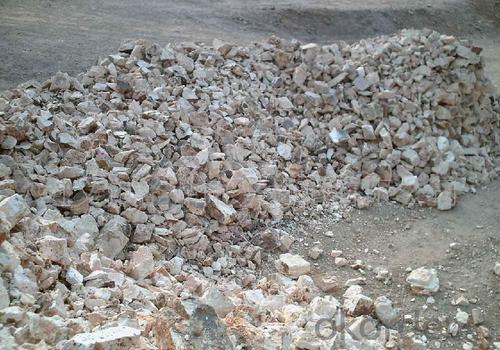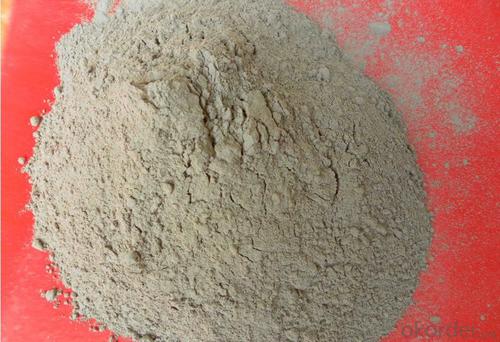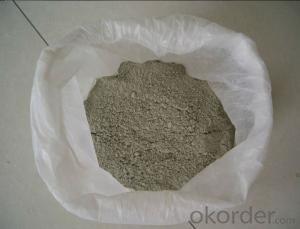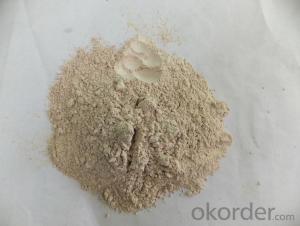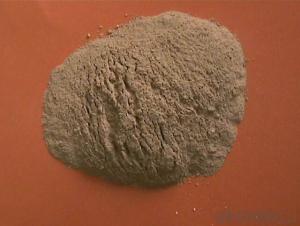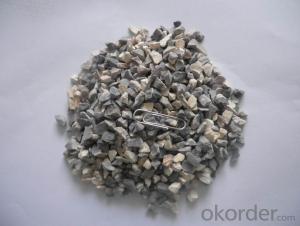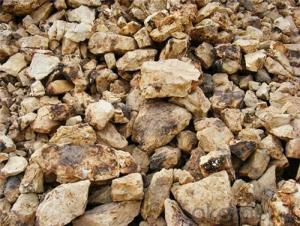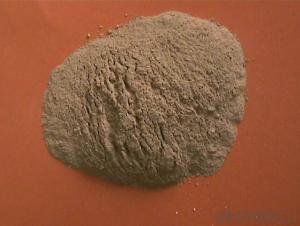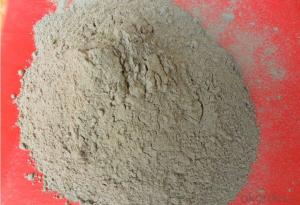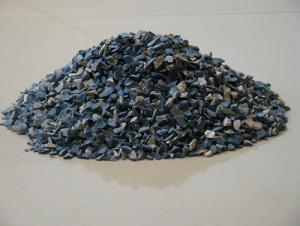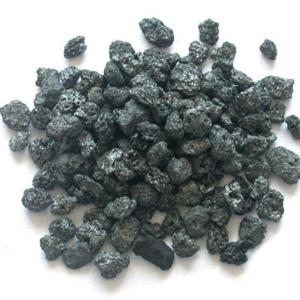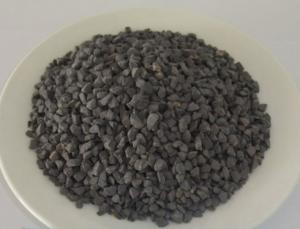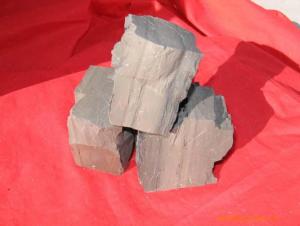Raw Materials for Refractory - Japan Supplier of Blast Furnace of CNBM in China
- Loading Port:
- Tianjin
- Payment Terms:
- TT OR LC
- Min Order Qty:
- 20000 m.t.
- Supply Capability:
- 10000000 m.t./month
OKorder Service Pledge
OKorder Financial Service
You Might Also Like
1.Structure of Calcined Bauxite Description
Bauxite (aluminous soil; Bauxite) is also called the alumina or bauxite, main ingredients are alumina, hydrated alumina containing impurities, is an earthy mineral. White or gray, brown and yellow or light red by iron.
Japan Supplier of Blast Furnace of CNBM in China
2.Main Features of the Calcined Bauxite
Calcined bauxite is one of the principal ore of aluminum. Calcined bauxite contains hydrous aluminum oxides and aluminum
hydroxides, formed through the laterization of aluminous rocks in tropical and subtropical areas .Calcined bauxite is obtained by calcining (heating)superior grade bauxite at high temperature (from 85OC to 1600C) .This removes moisture there. By increasing the alumina content,compared to an alumina content of about 57%to 58% in raw bauxite, calcined bauxite has an alumina content of 84%to88%.The heating is carried out in rotary kilns.
Japan Supplier of Blast Furnace of CNBM in China
3.Main usage of the Calcined Bauxite
(1) aluminium industry. Used in national defense, aerospace, automotive, electronics, chemical industry, daily necessities, etc.
(2) precision casting. Alumina clinker made after the mould precision casting processed into fine powder. Used in military industry, aerospace, communications, instrumentation, machinery and medical equipment department.
(3) is used for refractory products. High bauxite clinker refractoriness is as high as 1780, chemical stability strong, and good physical properties.
(4) aluminum silicate refractory fiber. With light weight, high temperature resistance, good thermal stability, low thermal conductivity, heat capacity is small and the advantages of resistance to mechanical shock. Used in iron and steel, nonferrous metallurgy, electronics, petroleum, chemical, aerospace, atomic energy, defense and other industries.
Japan Supplier of Blast Furnace of CNBM in China
4. Calcined Bauxite Images
Japan Supplier of Blast Furnace of CNBM in China
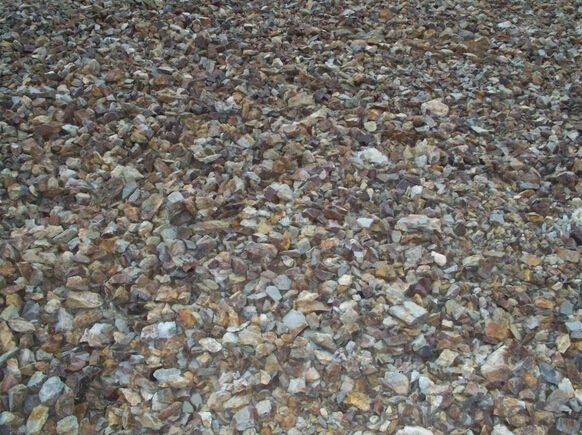
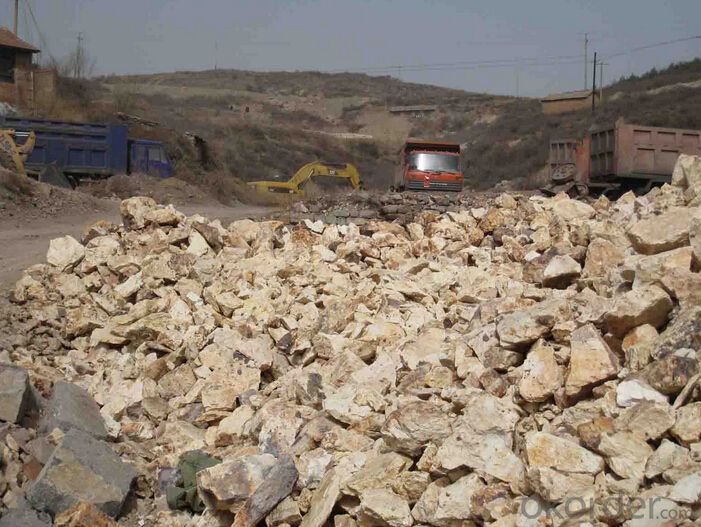
5. Calcined Bauxite Specification
tem | Data | |||||||
Chemical index | Al2O3 | Fixed Carbon | SiC+Si3N4 | H2O | ||||
≥35 | ≥ 12 | ≥ 18 | ≤3.0 | |||||
Physical Index | Refractoriness | Refractoriness under load | Cold Crushing Strength (1350*9h) | Cold Breaking Strength (1350*9h) | AP (1350*9h) | Bulk density (1350*9h) | Marshall value (50Mpa) | |
≥ 1600 | ≥ 1300 | ≥10 | ≥5 | ≥ 27 | ≥175 | 0.6-1.2 | ||
6.FAQ of Calcined Bauxite
1). Q: Are you a factory or trading company?
A: We are a factory.
2). Q: Where is your factory located? How can I visit there?
A: Our factory is located in ShanXi, HeNan, China. You are warmly welcomed to visit us!
3). Q: How can I get some samples?
A: Please connect me for samples
4). Q: Can the price be cheaper?
A: Of course, you will be offered a good discount for big amount.
- Q: What kinds of fireproof and fire retardant materials are there?
- fireproof materials are mainly non-combustible A material and flame retardant B1materials. Class A non-combustible material: Granite, marble, terrazzo, cement products, concrete products, plasterboard, lime products, clay, glass, tiles, mosaics, steel, aluminum, copper alloy; B1 grade flame retardant materials: Ceiling materials gypsum board, gypsum fiber boards, cement particle board, mineral wool acoustic panels, glass wool decorative acoustic board, perlite decorative acoustic board, flame retardant plywood, medium density fiberboard flame, rock wool decorative panels, retardant wood, aluminum composites, flame retardant phenolic plywood, aluminum foil, glass fiber reinforced plastic composite materials; wall materials gypsum board, gypsum fiber boards, cement particle board, mineral wool board, glass wool board, perlite board, flame retardant plywood, retardant MDF, fireproof plastic decorative plates, flame-sided particleboard, colorful paint, flame retardant wallpaper, wall covering flame retardant, flame imitation granite decorative plates, magnesium oxychloride cement prefabricated wall panels, flame retardant glass fiber reinforced plastic plate, PVC plastic sheeting, high-strength lightweight composite panels, fire-retardant molded wood composite board, color retardant plywood, fiberglass and other flame retardant.
- Q: what's the classification of fireproof and thermal inuslation matertial?
- Inorganic thermal insulation material can do it, such as glass wool,rock wool,foam glass,etc. phenolic foam materials in organic foam material is special. phenolic foam not only has good thermal insulation properties but also can be composited with steel plate and other materials, A class thermal insulation materials that reach A class combustion performance include: rock (mine) wool, foam glass, EVB, etc. thermal insulation materials with A class combustion performance mainly include: phenolic aldehyde,gelatine powder polyphenyl granule, etc. thermal insulation material of fire barrier zone can use rock (mine) wool, foam glass, EVB and other materials with A class combustion performance.
- Q: What is the concept of lightweight refractory material?
- Lightweight refractory material has high porosity, mechanical strength and erosion resistance. Compared with normal refractory bricks, it is a kind of refractory material with large volume shrinkage in high temperature, low thermal conductivity and small bulk density. It is used as thermal insulation material in industrial furnace and other thermal equipments. It has poor wear resistancel.
- Q: who knows how to classify the fire resistant levels of fireproofing material?
- Grade of fireproofing material: Class A: Incombustible building material, almost without burning. class A1: Non-combustible, no open flame,class A2: Non-combustible,it needs to measure smoke and be qualified. Class B1: Nonflammable building material: Nonflammable materials have good flame resistance function. when it contacts open fire or is under high temperature, it's difficult to burn and be spreading rapidly, and will stop burn after removing the combustion?source. Class B2: Combustible?building?materials: Combustible materials have good flame resistance function. when it contacts open fire or is put in the air at high temperature, it will immediately burst into flames, and easily result in the spreading of fire, such as wooden column, timber roof truss, timber beam, wooden stairs, etc. Class B3: Inflammability building materials, without any flame resisting effects, easy to burn, and has large danger of fire disaster.
- Q: Which one is better, fire-resistant wood or steel?
- From the aspect of low-carbon and environment protection, the steel and timber structures are both OK, they are both renewable resources, the steel can be recycled and melt down again and wood can continue to be planted. Fireproof board Fireproof board is a refractory material used for surface decoration. It is widely used in interior decoration, furniture, kitchen cabinets, laboratory tables, walls, and other fields.
- Q: Who knows the external wall thermal insulation materials fire rating requirements?
- The basic requirements of ratings. The design should comply with relevant state regulations and standards, the combustion performance used in exterior insulation material shouls be level A and not less than the level B2 fireproofing material. The requirements of Department of Housing and the Ministry of Public Security No. 46: Residential buildings: the height of building is greater than 100 meters, the combustion performance of insulation materials should be level A. The other civil buildings: 24≤ height
- Q: What parts of cement kilns are refractories used on?
- Generally they are used in cyclone, feed pipe, and duct and refractories are high-strength alkali-resistant castable, calcium silicate board, high-strength alkali-resistant brick, dome-shaped alkali resistant brick. Refractories in smoke chamber are high-alumina refractory castable, anti-skinning pouring material and calcium silicate board. Refractories in duct are high-strength alkali-resistant bricks, calcium silicate boards and steel fiber reinforced castable. Refractories in hooding parts of kiln are high strength castable high alumina and calcium silicate board. Refractories in rotary kiln are phosphate bonded high alumina brick, silmo brick, magnesia chrome brick, steel fiber reinforced castable. Refractories in grate?cooler are vault alkali brick, high alumina refractory castable, steel fiber reinforced castable and calcium silicate board. Refractory in coal burner is dedicated castable for coal burner.
- Q: Can polystyrene foam color steel plate be used as decorative fireproofing material ?
- As far as I am concerned, polystyrene foam color steel plate cannot be used as decorative fireproofing material. Because polystyrene flame retardant and non-flame retardant of the points, from the fire retardant is generally self-extinguishing. Polystyrene is the polymer synthesized by styrene?monomer through free radicals polycondensation reaction. It is a transparent thermoplastic?plastic. With above 100 ℃ glass transfering temperature,it is often used to make a variety of disposable container and disposable foam lunch box which have to withstand the boiling water temperature.
Send your message to us
Raw Materials for Refractory - Japan Supplier of Blast Furnace of CNBM in China
- Loading Port:
- Tianjin
- Payment Terms:
- TT OR LC
- Min Order Qty:
- 20000 m.t.
- Supply Capability:
- 10000000 m.t./month
OKorder Service Pledge
OKorder Financial Service
Similar products
Hot products
Hot Searches
Related keywords
